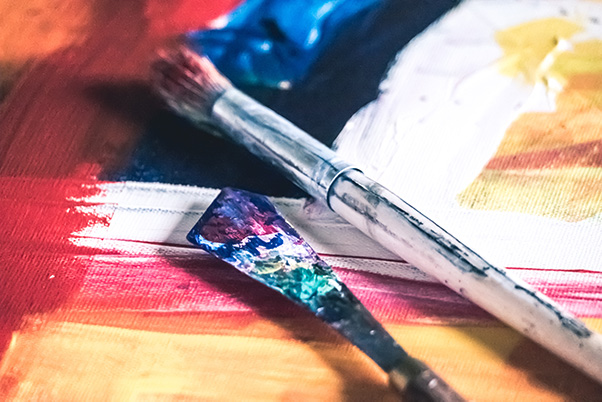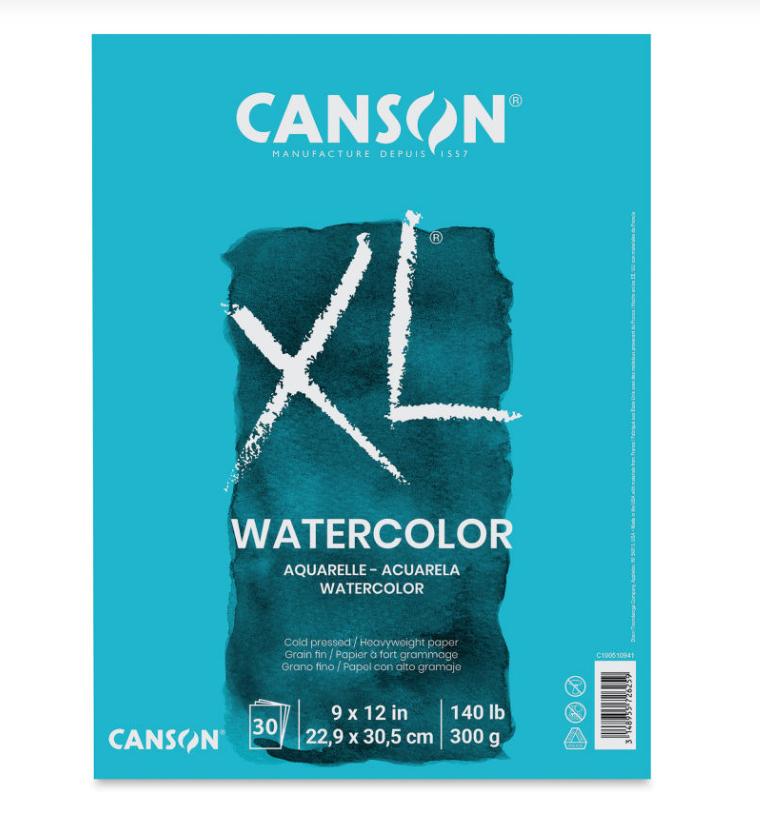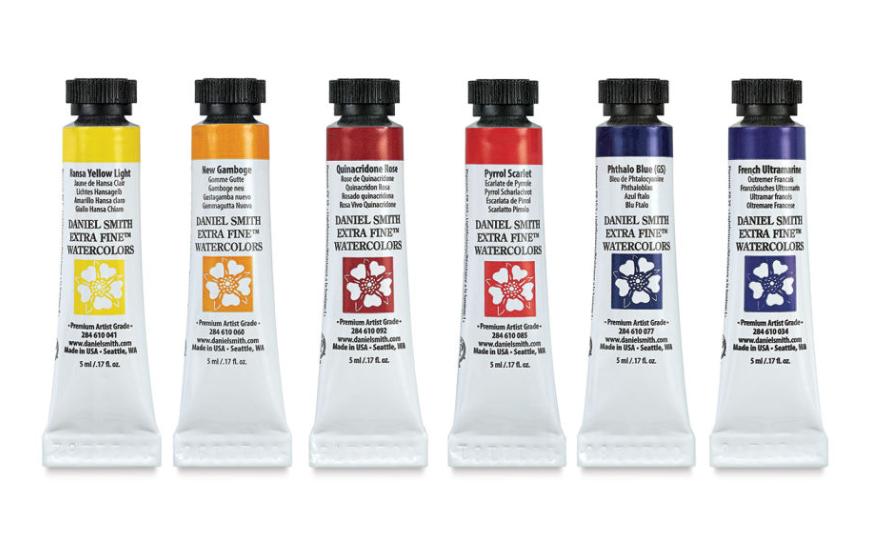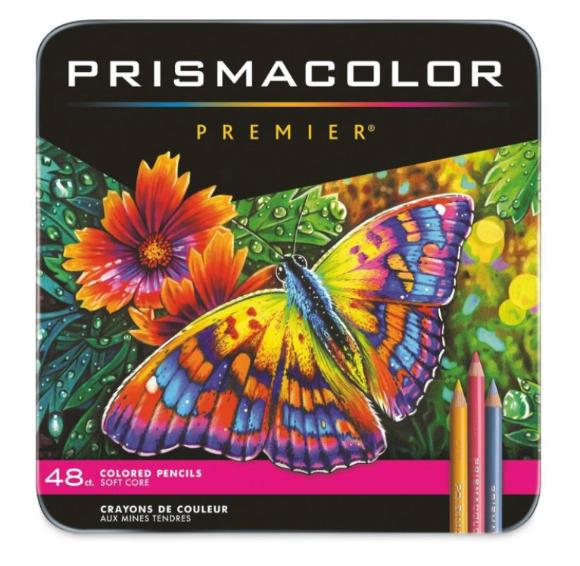Art supplies are the tools and materials artists use to create their works. They range from basic items like pencils and paper to more specialized equipment like airbrushes and printing presses.
Basic Art Supplies
- Pencils: Available in various grades, from hard (H) to soft (B). Essential for sketchingSketching is a fundamental practice in the art world, involving the creation of quick, loose drawings to capture basic shapes, forms, and ideas. It serves as the backbone for more detailed artworks and helps artists refine their concepts. Essential Sketching Supplies • Pencils: Ranging from hard (H) to soft (B) grades, providing a variety of lines and textures. • Paper: More and detailed drawingDrawing is a foundational art form that involves creating images on a surface, typically paper, using tools such as pencils, pens, and charcoal. It is a versatile medium that allows artists to express ideas, emotions, and stories through lines, shapes, and shading. Historical Background • Prehistoric Beginnings: The earliest known drawings date back to prehistoric times, with cave drawings found More.
- Erasers: Include kneaded, rubber, and precision erasers. Useful for correcting mistakes and adding highlights.
- Paper: Comes in different textures and weights. Choices include sketchingSketching is a fundamental practice in the art world, involving the creation of quick, loose drawings to capture basic shapes, forms, and ideas. It serves as the backbone for more detailed artworks and helps artists refine their concepts. Essential Sketching Supplies • Pencils: Ranging from hard (H) to soft (B) grades, providing a variety of lines and textures. • Paper: More paper, watercolor paper, and Bristol board.
- Paints: Types include watercolor, acrylic, oil, and gouacheGouache is a painting medium similar to watercolor but with a higher pigment content, resulting in a more opaque and vibrant finish. Known for its versatility and rich texture, gouache is favored by artists for its ability to create both detailed illustrations and bold, expressive works. Historical Background Gouache has a long history, used by artists and illustrators across various More. Each offers unique properties and applications.
- BrushesBrushes are indispensable tools for artists, used to apply paint, create textures, and define details. With a wide range of shapes, sizes, and materials available, understanding the different types of brushes and their uses can significantly enhance an artist's work. Definition and Composition • Brush: An artist's tool made up of a handle, a ferrule (the metal part that connects More: Vary in shape, size, and material. Common types include round, flat, and filbert brushesBrushes are indispensable tools for artists, used to apply paint, create textures, and define details. With a wide range of shapes, sizes, and materials available, understanding the different types of brushes and their uses can significantly enhance an artist's work. Definition and Composition • Brush: An artist's tool made up of a handle, a ferrule (the metal part that connects More.

Specialty Art Supplies
For more advanced or specific techniques, artists may use:
- Pastels: Soft, hard, and oil pastels provide vibrant colors and a unique texture.
- CharcoalCharcoal is a popular and expressive medium used in drawing. Known for its deep blacks and range of tones, charcoal allows artists to create dramatic and dynamic artworks with a distinct, textured look. Historical Background • Ancient Beginnings: Charcoal has been used since prehistoric times, with early humans using burnt sticks to create drawings on cave walls. These early works More: Offers rich, deep blacks and is great for expressive drawingDrawing is a foundational art form that involves creating images on a surface, typically paper, using tools such as pencils, pens, and charcoal. It is a versatile medium that allows artists to express ideas, emotions, and stories through lines, shapes, and shading. Historical Background • Prehistoric Beginnings: The earliest known drawings date back to prehistoric times, with cave drawings found More.
- InkInk, a liquid or paste used for writing, drawing, and printing, has played a crucial role in communication and artistic expression throughout history. Made from various pigments and dyes, ink allows for the transfer of text and images onto surfaces such as paper, fabric, and other materials. Types of Ink There are several types of ink, each serving different purposes More: Used for drawingDrawing is a foundational art form that involves creating images on a surface, typically paper, using tools such as pencils, pens, and charcoal. It is a versatile medium that allows artists to express ideas, emotions, and stories through lines, shapes, and shading. Historical Background • Prehistoric Beginnings: The earliest known drawings date back to prehistoric times, with cave drawings found More and calligraphyCalligraphy, the art of beautiful writing, has been practiced for centuries across various cultures. This artistic form of writing emphasizes the aesthetic presentation of letters and symbols, combining skillful penmanship with artistic expression. Historical Overview • Origins: Ancient civilizations such as China, Egypt, and Rome • Chinese Calligraphy: Developed around 2000 BC, using brush and ink • Islamic Calligraphy: Flourished More. Available in bottles or pens.
- Markers: Come in a variety of types including alcohol-based, water-based, and permanent.
- Airbrushes: Allow for smooth, even application of paint, ideal for detailed work and gradients.

Choosing the Right Art Supplies
Selecting the appropriate art supplies depends on the medium and technique.
- Medium: Decide if you’ll work with pencils, paints, pastels, etc. This influences your supply choices.
- Technique: Certain supplies are better suited for specific techniques, such as blending or layeringLayering is a fundamental technique in art that involves building up multiple layers of material to create depth, texture, and complexity in a composition. This approach is used in various art forms, including painting, drawing, digital art, and mixed media. Layering allows artists to add richness and dimension to their work, making it more dynamic and engaging. Defining Layering Layering More.
- Skill Level: Beginners might start with basic supplies and gradually expand their collection as they gain experience.

Storing and Organizing Art Supplies
Proper storage and organization can prolong the life of your supplies and make your workspace more efficient.
- Storage Boxes: Keep supplies sorted and protected.
- Drawers and Cabinets: Ideal for larger items and keeping your workspace tidy.
- Portable Cases: Useful for artists who travel or work in different locations.
Safety Considerations
While most art supplies are safe, some can pose risks if not handled properly.
- Ventilation: Ensure good airflow when using paints, solventsSolvents play a key role in the creation and maintenance of art. These substances, used to dissolve, thin, or clean materials, are indispensable in various artistic processes. Understanding the types of solvents and their applications can help artists achieve desired effects and maintain their tools and artworks. Definition and Composition • Solvent: A liquid substance capable of dissolving other substances. More, or other chemicals.
- Protective Gear: Gloves, masks, and aprons can protect your skin and clothing.
- Label Reading: Always read labels and follow safety instructions, especially for products like solventsSolvents play a key role in the creation and maintenance of art. These substances, used to dissolve, thin, or clean materials, are indispensable in various artistic processes. Understanding the types of solvents and their applications can help artists achieve desired effects and maintain their tools and artworks. Definition and Composition • Solvent: A liquid substance capable of dissolving other substances. More and sprays.
Sustainable Art Supplies
Eco-friendly options are increasingly available for environmentally conscious artists.
- Recycled Paper: Made from post-consumer waste, reducing environmental impact.
- Non-Toxic Paints: Free from harmful chemicals, safer for artists and the environment.
- Sustainable BrushesBrushes are indispensable tools for artists, used to apply paint, create textures, and define details. With a wide range of shapes, sizes, and materials available, understanding the different types of brushes and their uses can significantly enhance an artist's work. Definition and Composition • Brush: An artist's tool made up of a handle, a ferrule (the metal part that connects More: Made with natural fibers and sustainable wood.
Popular Brands
Several brands are renowned for their quality and reliability in the art community.
- Winsor & Newton: Known for high-quality paints and brushesBrushes are indispensable tools for artists, used to apply paint, create textures, and define details. With a wide range of shapes, sizes, and materials available, understanding the different types of brushes and their uses can significantly enhance an artist's work. Definition and Composition • Brush: An artist's tool made up of a handle, a ferrule (the metal part that connects More.
- Faber-Castell: Offers a wide range of pencils, markers, and other drawingDrawing is a foundational art form that involves creating images on a surface, typically paper, using tools such as pencils, pens, and charcoal. It is a versatile medium that allows artists to express ideas, emotions, and stories through lines, shapes, and shading. Historical Background • Prehistoric Beginnings: The earliest known drawings date back to prehistoric times, with cave drawings found More tools.
- Canson: Famous for its fine art papers, suitable for various media.
- Prismacolor: Popular for their vibrant colored pencils and markers.

Buying Art Supplies
When purchasing art supplies, consider the following tips:
- Quality vs. Quantity: Invest in high-quality supplies that last longer and perform better.
- Test Before Buying: Whenever possible, try out supplies to see if they suit your style and needs.
- Shop Online and Offline: Both options offer different benefits, such as variety and the ability to test products in person.
Maintenance of Art Supplies
Proper care extends the life of your art supplies.
- Clean BrushesBrushes are indispensable tools for artists, used to apply paint, create textures, and define details. With a wide range of shapes, sizes, and materials available, understanding the different types of brushes and their uses can significantly enhance an artist's work. Definition and Composition • Brush: An artist's tool made up of a handle, a ferrule (the metal part that connects More: Rinse thoroughly after each use to prevent paint from drying in the bristles.
- Sharpen Pencils: Keep pencils sharp for precise lines and better control.
- Store Properly: Keep supplies in a dry, cool place to prevent damage.
Exploring New Art Supplies
Experimenting with new supplies can inspire creativity and help you discover new techniques.
- Sample Packs: Many stores offer sample packs of various supplies.
- Workshops: Attend workshops to try out new materials and learn from other artists.
- Online Reviews: Read reviews and watch tutorials to get insights into new products.
Resources for Artists
Several resources can help you choose and use art supplies effectively.
- Art Supply Stores: Local and online stores offer a wide range of products and knowledgeable staff.
- Tutorials and Guides: Websites, YouTube channels, and books provide tips and techniques.
- Art Communities: Join online forums and local groups to share experiences and get recommendations.
URLs:
You might also enjoy reading the following posts by Pigment Pool:
25 Facts to Know About Egon Schiele: Klimt, Women, and Austrian Expressionism
A Brief History of Colour Pigments
The Psychology of Colour in Art: Masterpieces and Mind Games
The Art of Hanging Art: How to Follow and Break Rules
The Best Acrylic Paint Set for Artists and Hobbyists In 2022
The Best Sketching Pencils for Artists and Beginners in 2022
This article may contain compensated links. Please read Disclaimer for more info. As an Amazon Associate, I earn from qualifying purchases.
